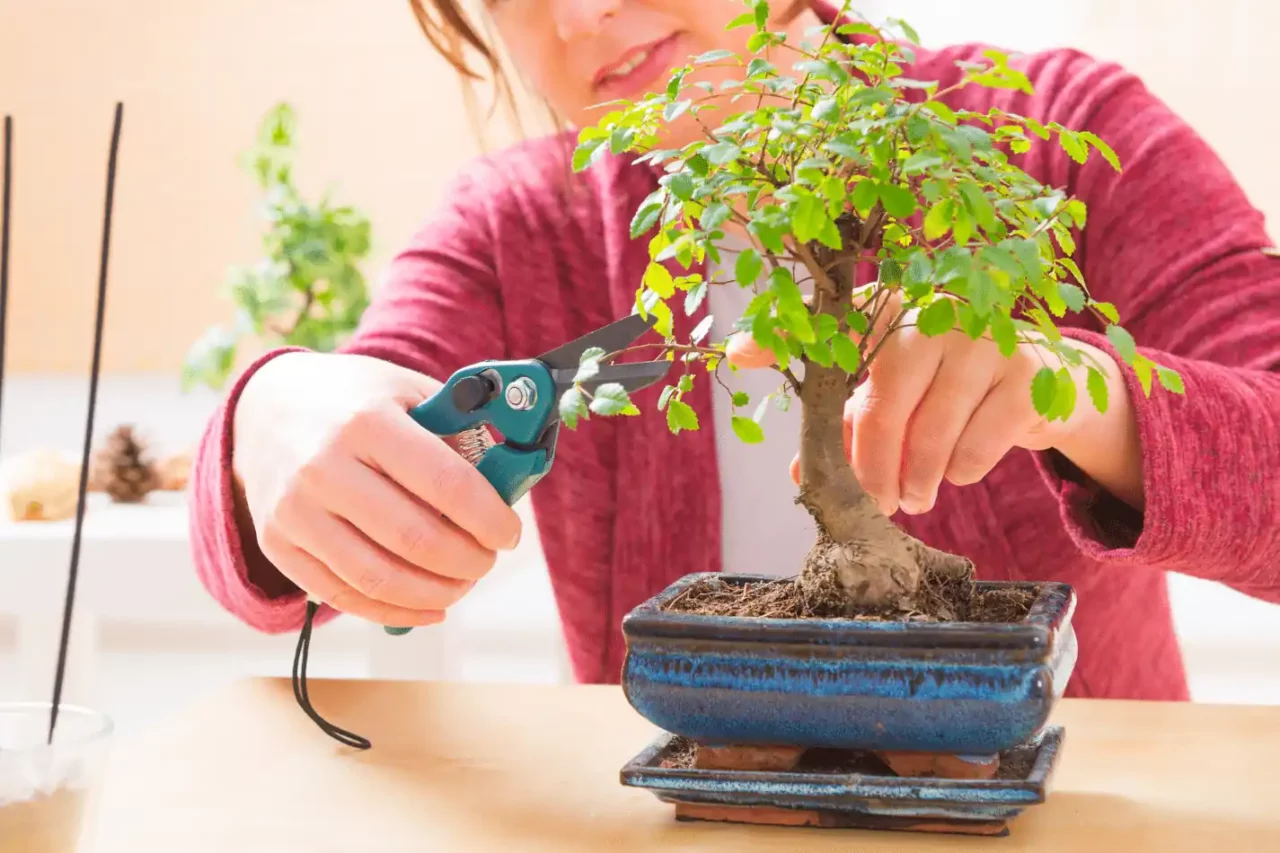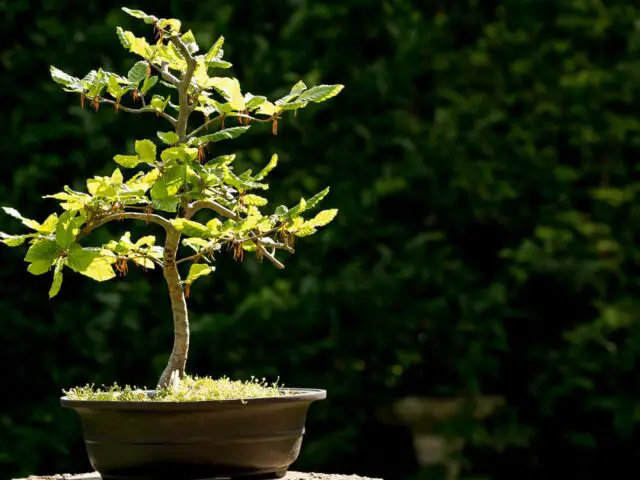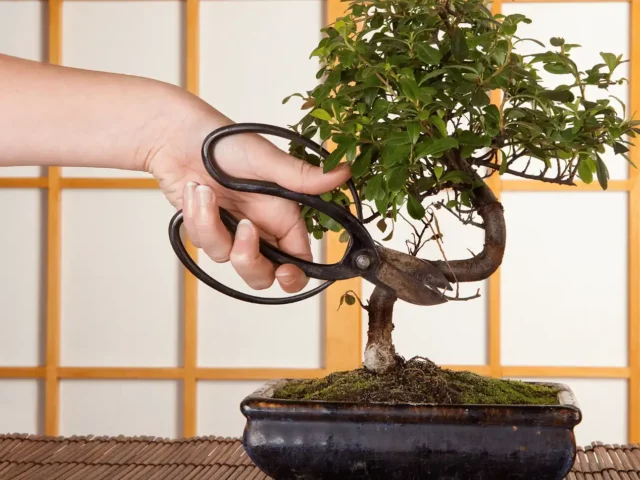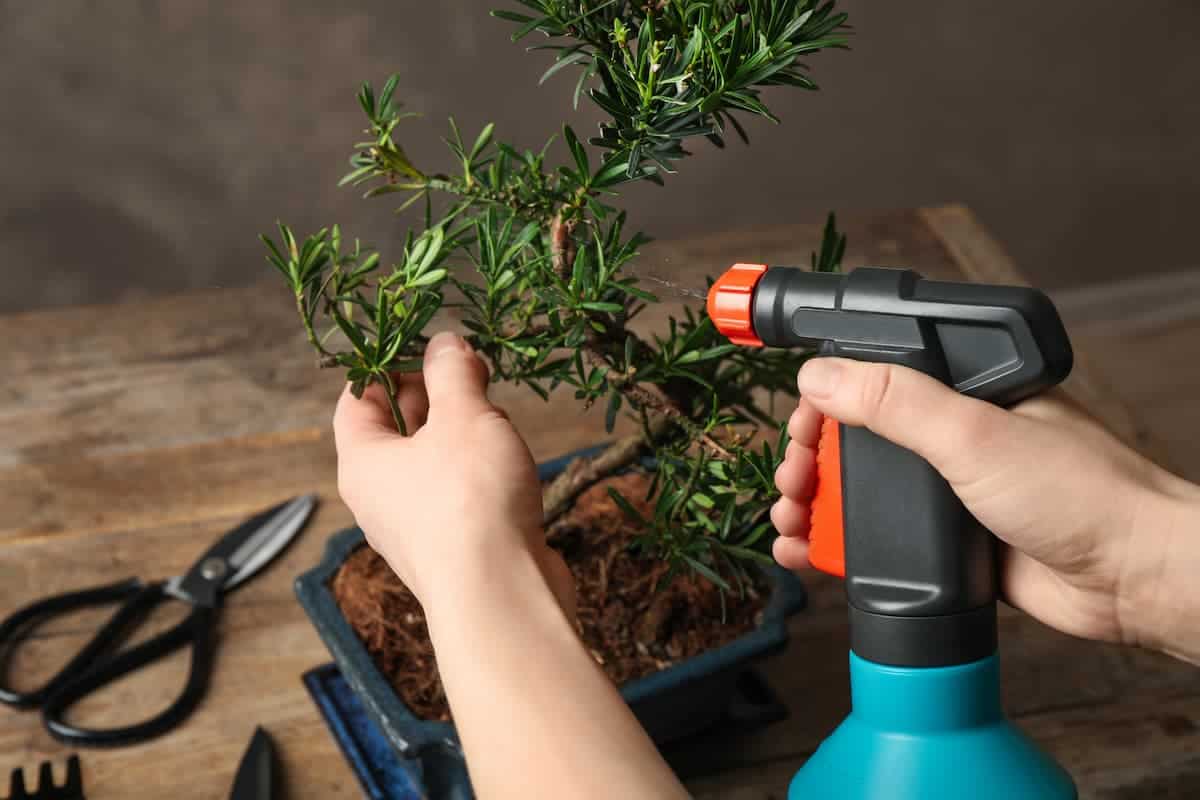Navigating the tools for bonsai care is like charting a course through a dense forest; it requires precision and understanding.
You’ve likely encountered the decision between using a Bonsai Knob Cutter and a Concave Cutter. The former is your go-to for removing unsightly knobs and creating a smooth trunk surface, while the latter excels in making clean, close cuts that heal rapidly, preventing unsightly scars.
But how do you decide which tool is best for your specific situation? Let’s explore the nuances of each, and uncover why mastering the use of both could elevate your bonsai artistry to new heights.

Key Takeaways
- Knob cutters are ideal for removing tough branches and creating divots for seamless healing.
- Concave cutters are best for precise, clean cuts, promoting healthy tree healing.
- Regular maintenance, including cleaning, oiling, and sharpening, is crucial for both tools’ effectiveness.
- Selecting the right tool depends on the bonsai’s pruning needs and the desired aesthetic result.
Understanding Knob Cutters
Knob cutters, the sculptor’s chisel for bonsai enthusiasts, precisely carve away unwanted branches, ensuring your tree’s wounds heal seamlessly and maintain their natural beauty.
Designed to tackle tough branches that defy simpler tools, these cutters bite deep, creating divots in the trunk where healing can begin. Unlike the gentler concave cutter, they’re the go-to for removing stubborn knobs left after branch removal, playing a crucial role in bonsai tree maintenance.
Their aggressive bite isn’t just about force; it’s about finesse, allowing branches to merge flawlessly with the trunk, preserving the tree’s aesthetic harmony. For you, the freedom-loving artist, knob cutters are indispensable for sculpting your bonsai, ensuring each cut contributes to the tree’s health and your vision’s realization.
Exploring Concave Cutters
As you venture further into the art of bonsai, understanding the nuanced role of concave cutters becomes essential. These tools not only ensure your tree’s wounds heal flawlessly but also maintain the integrity of its intricate design.
Let’s explore how to utilize and care for these cutters, elevating your bonsai’s health and visual harmony.
Concave Cutter Uses
Exploring the world of bonsai cultivation, you’ll find concave cutters to be indispensable for executing clean, straight cuts that enhance the tree’s natural beauty and health.
This bonsai tool, with its pointed edge, allows for precise pruning, even in the tightest spaces between foliage. It’s not just about removing branches; it’s about facilitating a healing process that promotes overall tree health.
The unique design of the concave cutter makes it particularly useful for maintaining bonsai trees with specific growth patterns and aesthetics.
Achieving precise and aesthetically pleasing pruning results isn’t a mere chance—it’s a skill honed with the right tools.
In your quest for artistic freedom in bonsai cultivation, a concave cutter becomes an extension of your vision, enabling you to shape nature with precision and care.
Maintenance Tips
How do you ensure your concave cutters remain in peak condition, ready to sculpt your bonsai masterpieces with precision?
By embracing essential maintenance tips, you’re not just caring for a tool; you’re nurturing your art’s future. Regularly clean and oil your concave cutter to fend off rust and debris. This ritual preserves its grace, ensuring longevity and optimal performance.
Sharpen its blades often; a keen edge translates to clean, precise cuts, the hallmark of bonsai artistry. Store it in a dry, secure place, safeguarding against damage and maintaining its integrity.
Eschew excessive force and avoid overburdening it to prevent unnecessary wear. Periodically inspect for wear and tear, addressing issues promptly. This diligence ensures your concave cutter remains a reliable extension of your creative spirit.
Key Differences Highlighted
As you navigate the nuanced art of bonsai maintenance, you’ll find the choice between knob and concave cutters isn’t just about cutting; it’s about sculpting the tree’s future.
Knob cutters carve away the past, aggressively removing remnants of growth, while concave cutters shape wounds to heal with aesthetic grace.
Understanding this key difference ensures your bonsai not only survives the pruning process but thrives, embodying a balance of strength and beauty.
Cutting Technique Variations
While both knob and concave cutters are essential tools for bonsai enthusiasts, understanding the key differences in their cutting techniques is crucial for achieving the desired precision and aesthetic in your bonsai’s form.
Knob cutters, designed to tackle unwanted growth and knobs, boast an aggressive bite, making them ideal for sculpting through tougher branches. Their cuts are straightforward, aimed at removal rather than shaping.
In contrast, the concave cutter’s genius lies in its ability to create a concave hollow, promoting not just a visually appealing curvature but also facilitating faster healing. This tool is about finesse, allowing you to shape with an eye towards the future form of the tree.
Each tool, then, plays a unique role in the artful journey of bonsai pruning and shaping.
Healing Process Impact
Delving into the healing process, it’s crucial to understand that knob cutters and concave cutters not only shape your bonsai but also significantly influence its recovery trajectory, each leaving a distinct mark on the tree’s health and aesthetic appeal.
Knob cutters, by creating spherical cuts, ensure that your bonsai’s wounds heal flush with the surface, minimizing scarring and allowing for a quicker recovery.
On the other hand, concave cutters carve out concave shapes, not only facilitating healing but also preventing dieback. This ensures your tree remains both healthy and visually stunning.
The unique impact each tool has on the healing process underscores their pivotal roles in crafting a thriving, aesthetically pleasing bonsai. It’s the artistry behind each cut that propels your bonsai toward optimal recovery and beauty.
Ideal Use Cases
To master the art of bonsai maintenance, it’s crucial to understand how knob cutters and concave cutters serve distinct purposes in shaping and healing your miniature trees.
When you’re crafting your bonsai, think of knob cutters as sculptors’ chisels, perfect for trimming away unwanted growth and knobs with precision. This leaves a clean finish, ensuring your tree maintains its desired form.
On the other hand, the concave cutter is akin to a surgeon’s scalpel, designed for making concave cuts along the trunk or branches. These cuts facilitate faster healing, promoting minimal scarring and preventing dieback.
This nuanced understanding of each cutter’s ideal use case enhances your ability to maintain the beauty and health of your bonsai with artistic finesse and freedom.
Maintenance Tips
Ensuring your bonsai’s longevity and beauty, regular maintenance of your knob cutters and concave cutters is crucial, involving meticulous cleaning, oiling, and sharpening.
Dive into the ritual of caring for these tools as if they’re your bonsai’s best allies. After each use, cleanse them of debris to prevent rust. A gentle oil rub not only wards off corrosion but also keeps the mechanism smooth, ensuring each cut remains precise and effortless.
Sharpen their blades with the precision of an artist, enhancing their cutting efficiency. Store them in a haven, dry and secure, to avoid any damage. Be mindful of their capacity; excessive force could harm both the tool and your bonsai.
Regularly inspect for wear, ensuring they’re always in peak condition, ready to sculpt beauty with every cut.
Choosing the Right Tool
Selecting the right tool, be it a knob cutter or a concave cutter, hinges on understanding your bonsai’s specific pruning needs and the desired aesthetic outcome.
If you’re eyeing to clean up knobs on deciduous trees, a knob cutter’s aggressive bite tackles tough branches with finesse. Meanwhile, the concave branch cutter shines in sculpting cleaner, concave shapes essential for healing wounds with minimal scarring.
It’s about striking a balance between precision and versatility. The concave cutter and knob cutter each play their unique roles in the art of bonsai. Choosing between them boils down to the cuts your tree requires and its wellbeing.
Let your artistic vision and the tree’s health guide your hand in selecting the ideal tool for your bonsai’s journey.
Advanced Techniques
Delving into advanced bonsai techniques, you’ll find that the strategic use of wire and specialized pruning tools like concave cutters becomes indispensable for achieving intricate and aesthetically pleasing designs.
With a concave pruner, you’ll meticulously shape your bonsai, ensuring each cut enhances the tree’s natural beauty and promotes healthy growth. This tool, alongside wire cutters, allows for the precise manipulation of branches, enabling you to guide your bonsai’s form and structure with an artist’s touch.
Planning your bonsai’s future shape is a dance of foresight and creativity. Utilizing wire techniques, you’ll bend and twist, guiding each branch towards your envisioned design. The freedom to mold nature into a living sculpture lies in your hands, blending tradition with your unique artistic vision.
Conclusion
In your bonsai journey, mastering the use of both knob and concave cutters is vital.
While the knob cutter excels in sculpting and heavy cuts, the concave cutter is your go-to for precision and promoting seamless healing.
Care for these tools as you’d your bonsai, ensuring they’re always sharp and clean.
Choosing between them depends on the task at hand, but incorporating both into your toolkit enhances your artistry.
Embrace each tool’s unique capabilities to elevate your bonsai’s beauty and health.






